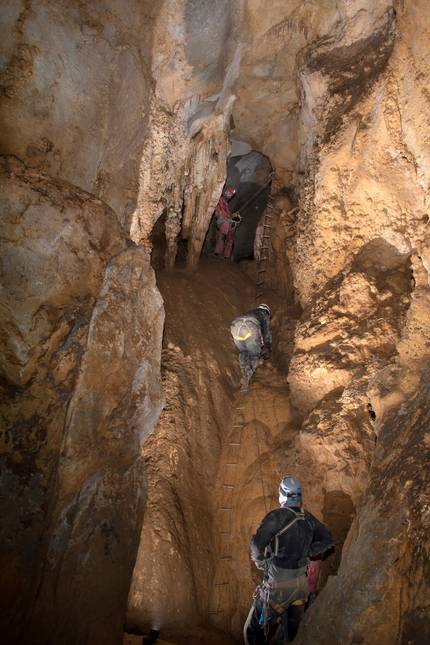
- The study of the cave art of the Madeleine period (18500 to 13,500 thousand years ago) in the caves of Euskal Herria through the combination of computational methods has allowed the differentiation of images according to their spatial and iconographic characteristics, concluding that they can be divided into four groups. The results have been published in the scientific journal Archaeological and Anthropological Sciences and the first author is Iñaki Intxaurbe Alberdi.

In fact, he is pursuing his doctoral thesis at the UPV/EHU Intxaurbe under the direction of Diego Garate Maidagan (UNICAN) and Martin Arriolabengoa Zubizarreta (UPV/EHU). Intxaurb has recognized that the result has been surprised because he did not think they found a model for image classification.
To do so, they have combined computational methods such as 3D technology, geographic information systems and multivariate statistics. They have shown that they are divided into four groups.
Regarding image function, Intxaurbe explains that two groups seem antagonistic. Sometimes the staging was taken care of, that is, they were made to be seen. In others, however, the opposite was sought: they are built in hidden places that are difficult to access, and are not easily visible.
In this sense, researchers suggest that they had different functions. The former may have a xamonic function. They are made by adults (at the top) and were probably related to the reports, as they are found in spaces that could accommodate medium or large groups. Seconds seem to respond to other reasons, like rites of passage. It is common to find them in areas closer to the earth, even when there were other alternatives. Along with them, there have been signs of children or teenagers (naked footprints, finger-striped size, etc.) They can be the authors.
Another group of figures from the Magdalenian era consists of elements engraved in clay and sculptures made. According to Intxaurbe, they are only found in the deepest and hidden areas of the caves, and although one might think that the most accessible areas have perhaps been lost, and that is why all those found are in difficult places, it does not seem to be the cause: “Indeed, after that prehistoric period, for geological reasons, they were also closed in other caves (such as Erberua, La Garma, Fontanet...), they have only been found in hidden places. Therefore, it seems that it was a cultural decision."
Finally, there's a group of abstract signs. “In them we have not seen a special position, they appear randomly anywhere in the decorated cave. They have been interpreted as signs of identity of the group, so no matter how they did it at the entrance or at the depth, because they will always have the same meaning,” Intxaurbe explained. He also comments that in the future they intend to include more such figures, such as those found in the caves of Arminxe, El Pindal or Cullalvera, to establish valid statistical inferences.
All the images analyzed (about 500) come from the caves of Euskal Herria, and during the study new images have also been found, such as in Santimamiñe and Ekain. The results have also been compared with the images of the caves of the Pyrenees, Dordogne and Cantábrico, and Intxaurbe has advanced that in the future they will have more results.
